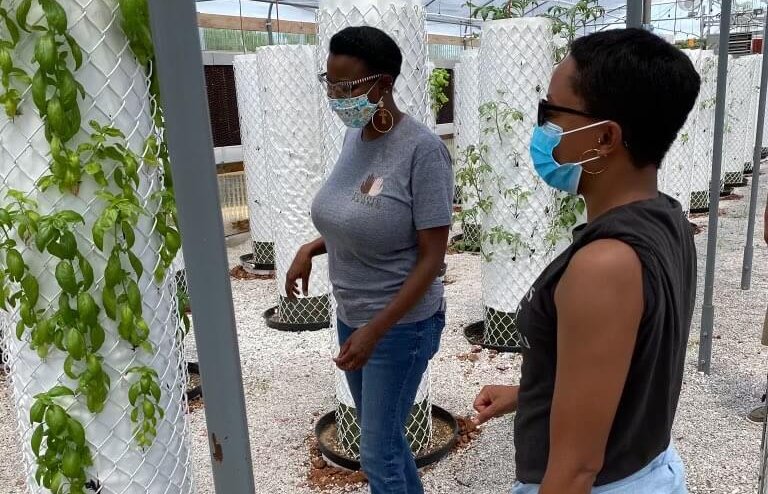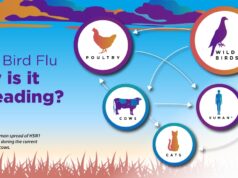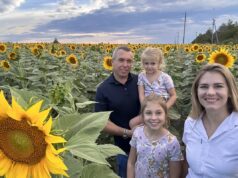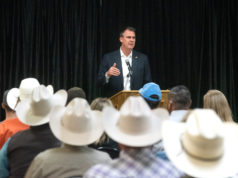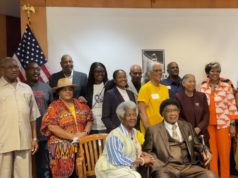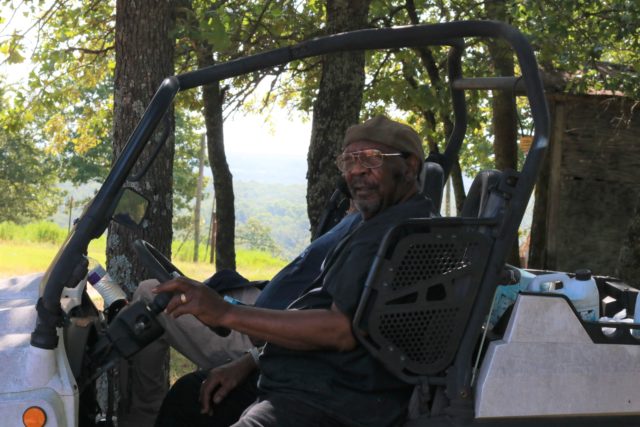

SEMINOLE NATION / SEMINOLE — Alvin Lee has raised cattle outside Seminole for 25 years. Like thousands of Black farmers in the United States, he has never seen a profit.
“One year, I just had $2,000 in tires and flats. Plus feed. Every time I go to get feed, it’s about $300,” Lee said. “The wintertime is what really costs me. I have to feed [my cattle] every day in the winter. Diesel is outrageous now. When they start going up on diesel, goddamn. That’ll eat you alive.”
Lee’s property covers 160 acres, but about 100 of those are covered with trees. He recently bought a $15,000 bulldozer to take down more trees and open up more usable land, but maintenance has been expensive. The dozer’s tracks are misaligned, and it has an oil leak.
“That kind of shit happens. It’s costly. It’s always something,” Lee said, noting that he gets by with supplemental income from a military disability allowance and his Social Security payments.
The $1.9 trillion American Rescue Plan Act passed in March included a program that allotted $4 billion from the USDA to “socially disadvantaged farmers” for debt relief.
The program promised a leg up to minority farmers, including Black farmers such as Lee, who have historically struggled to procure the funding their white counterparts have received.
In June, however, a federal judge in Wisconsin issued a temporary restraining order on the program, siding with a conservative group that argued the provision discriminates against white farmers. Since then, the funds have been frozen, but the USDA has promised to fight the ruling.
“We respectfully disagree with this temporary order and USDA will continue to forcefully defend our ability to carry out this act of Congress and deliver debt relief to socially disadvantaged borrowers,” Matt Herrrick, USDA director of communications, told The Washington Post. “When the temporary order is lifted, USDA will be prepared to provide the debt relief authorized by Congress.”
For many of Oklahoma’s Black farmers, however, the situation is just another chapter in a long history of disappointment with federal agencies. And after decades of facing various barriers and discrimination, many have had to find other ways to get by.
A history of obstacles
Black farmers make up about 1.74 percent of farmers in the U.S., and they work 132 acres on average — the smallest average farm size of all the ethnic groups surveyed in a 2017 USDA census of agriculture. (White farmers work an average of 431 acres.)
Among other services the USDA’s Farm Service Agency provides, according to its website, “the agency provides credit to agricultural producers who are unable to receive private, commercial credit. FSA places special emphasis on providing loans to beginning, minority and women farmers and ranchers.”
The Oklahoma State USDA-FSA office is in Stillwater, on the OSU campus, and there are 59 county offices throughout the state.
A spokesperson for the state office said farmers seeking loans follow a process that is roughly the same as getting a loan from a commercial bank, and different information is needed for different types of loans. The more money requested, the more involved the application.
But, in practice, Black and minority farmers have often found it particularly difficult to procure these funds, sometimes because of financial hurdles like credit requirements or barriers such as language or forms of unfair treatment.
Last year, the USDA granted loans to 37 percent of Black applicants in one program to help farmers pay for land, equipment and repairs, according to a Politico report of USDA data. The same program, Politico reported, granted 71 percent of white farmers’ applications.
George Roberts is a third-generation rancher with 500 acres — 200 filled with trees — in Sasakwa. He has only gone to the FSA for a loan once, in 1982. He succeeded in getting the loan, but it wasn’t as much money as he needed and “I had to put up everything to get it,” he said.
He eventually paid off that loan, but he has since gone elsewhere for funding. Roberts said he is currently working on getting benefits from the Natural Resources Conservation Service.
But while he has struggled to get funding, he has also perceived an injustice.
“I notice the white farmers are getting what they need,” Roberts said. “They’re doing excellent. New equipment. Land cleared. Different things I hope to get someday.”
A sense of mistrust

Willard Tillman, executive director at the Oklahoma Black Historical Research Project, said Black farmers hold a sense of “mistrust” toward the FSA.
“You’re going to always have it because of discriminatory things they have done in the past,” he said. “There are still things not addressed.”
He said most Black farmers have multiple jobs.
“Those farmers themselves love to farm, and they do farm under a lot of circumstances,” Tillman said. “But when it gets to the point where there’s no light at the end of the tunnel, they may not farm, but they won’t give up their land.”
According to the 2017 USDA census, Black farmers on average made a net cash income of $3,505, compared to an average of $43,053 for farmers nationwide and $43,608 for white farmers.
Alvin Lee’s longtime friend, Mitchell Warren, has lived near him for three years and has 39 acres.
“When I bought my land loan, I basically had to come out of pocket, but because the FSA put up so many barriers, I couldn’t (make it work),” Warren said.
He turned to a private loan, instead, on which he pays a 6 percent interest rate.
Neither Warren nor Lee feels able to navigate the FSA loan system successfully, and they have learned to be skeptical of promises from the agency.
“With all these different programs they claim they have, they have us travel all across the united states going to these farm programs and so forth and so on, you hear the same thing everywhere you go,” Lee said. “‘We’re going to do this, we’re going to do that.’ Then you contact them, and they say, ‘Well we can set you up to do this, but we don’t have any money.’”
Navigating the system
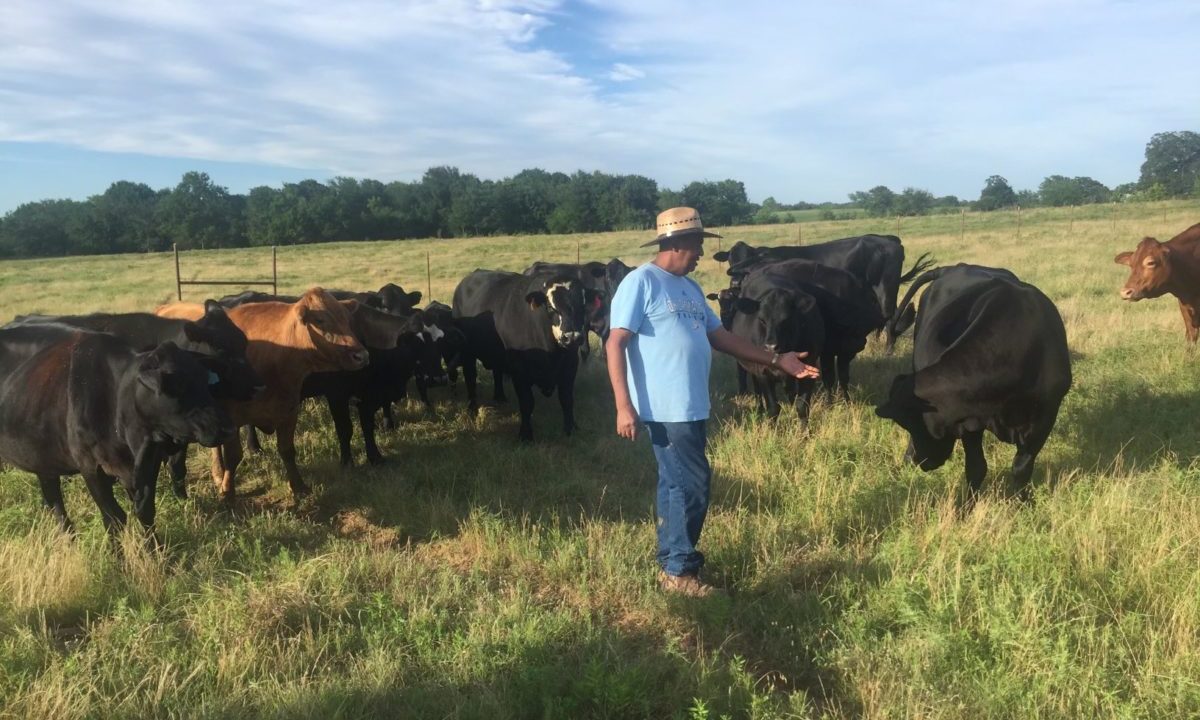
Arnetta Cotton, owner of Cattle for the Kingdom located between Wagoner and Coweta, said the freezing of American Rescue Plan Act funds is “on par” with the situations Black farmers have found themselves facing in the past.
Cotton serves on the USDA Advisory Committee on Minority Farmers and runs a community outreach division at the Unity Temple Family Church in Inola.
Partnering with Langston University, Oklahoma State University and the Noble Research Institute, the church’s Agriculture in Action program provides farmers instructions on how to fight barriers in place at their local FSA office.
“We guide them through the process, whether it be making themselves eligible, filling out forms correctly, going with someone to the office to make sure they’re not discriminated against,” Cotton said.
George Roberts described the racial barriers he has faced as “something we learned as Black farmers to just deal with.”
But he expressed guarded hope for the future.
“Looks like we’re not going to get it in our lifetime,” he said. “Next generation might get something a little better.”
Follow @NonDocMedia on:
Looking to the future
Like Roberts, those who support and promote the success of Black farmers say everything depends on the next generation.
Healthy Oklahomans Nutrition Alliance founder Lainey Porter said if the FSA and the USDA create and improve outreach programs, she sees the number of Black farmers “growing exponentially” in the future.
“However, if not, it’s just going to decline. The real problem is our farmers — and age alone, no matter what the demographic is — are all aging,” Porter said. “If we’re not building new socially diverse food systems, I don’t know where our food is going to come from.”
Porter said HONA was started to expand access to healthy food and give opportunities for young people to learn how to farm.
RELATED
Stopgap solutions buffer northeast OKC food desert by Archiebald Browne
One thing she and the organization try to promote is FSA Youth Loans, which make low-interest loans of as much as $5,000 available to young people between the ages of 10 and 20 who are pursuing agricultural projects.
Micah Anderson, who teaches horticulture for Langston University’s extension program, said working with young people in Oklahoma colleges and public schools has made him believe there will be more Black farmers in the state in the future.
“I’ve seen a lot of people wanting to get into growing stuff — a lot of kids,” he said. “That makes me think that there will be more getting back to it.”
Anderson said teaching middle-aged people how to grow their own food has proved to him that people are being encouraged to farm for the first time.
“I would encourage Black people to get back into it because we’ve always been good at it, ” Anderson said. “If we start doing it again, we’re going to be good at it again.”









